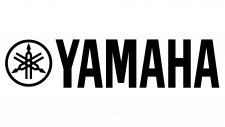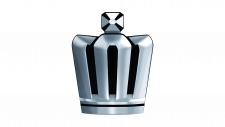Ducati Logo
Ducati, an Italian marvel, crafts elite motorcycles celebrated for their high performance and innovative design. Currently, they delve into the realm of sport, cruiser, and touring motorcycles. Europe and North America remain their prime markets. The prestigious Volkswagen Group, through its subsidiary Audi, stands as Ducati’s proud owner. From racing circuits to open roads, Ducati continues to mark its legacy, blending passion with innovation.
Meaning and history
Ducati, established in 1926 in Bologna, Italy, wasn’t initially a motorcycle manufacturer. It was founded by the Ducati brothers: Antonio, Adriano, Bruno, and Marcello. The firm’s earliest endeavors were in radio components.
The shift to motorcycles began post-WWII when they introduced “Cucciolo,” a tiny engine for bicycles. It was a hit, paving the way for bigger bikes. By the 50s, Ducati was crafting its own motorcycles, characterized by their desmodromic valves and trellis frames.
The 80s witnessed Ducati under the ownership of Cagiva, another Italian motorcycle manufacturer. This period saw the introduction of iconic models like the 916, blending unique aesthetics with unmatched performance.
In 1996, Ducati’s control transferred to the Texas Pacific Group, who later floated 65% of the company on the New York and Milan stock exchanges. Despite these corporate shifts, the heart of Ducati remained: creating bikes with spirited designs and unparalleled speed.
2008 marked another significant transition: Ducati’s acquisition by the Lamborghini group, a subsidiary of Audi, itself under the umbrella of the Volkswagen Group. This heralded a new age of innovation, with Ducati upholding its legendary status in the motorcycle world.
Throughout these metamorphoses, from radio parts to roaring race track beasts, Ducati remains an emblem of Italian passion and engineering prowess.
1926 – 1935
In the vibrant year of 1926, the renowned Societá Scientifica Radio Brevetti Ducati enterprise was established. By the following year, it was under the leadership of three visionary brothers. Initially, this organization’s main focus was the crafting and distribution of radio components, reflecting the technological boom of that age. Their emblem was quite distinctive, showcasing two interlocking letters “S”, facing each other. These letters were encompassed within a pristine white circle that was outlined delicately with a sleek black boundary. Below these letters, a striking lightning bolt was depicted, symbolizing the power of electricity and the company’s commitment to innovation. Above this visual representation of electricity, the company’s name was elegantly inscribed. Interestingly, the word’s typography had a unique touch; the letter “U” was replaced with “V”, mirroring the distinct stylistic preferences associated with the fascist period. This choice of typography subtly hinted at the cultural and political nuances of the time, intertwining history with branding.
1935 – 1949
In the 1930s, as the producer diversified their collection to include a variety of radio apparatuses, they transitioned to a novel primary location. This evolution motivated them to redesign their emblem. While preserving the circular element, they integrated slanted cursive initials “SSR” set in the backdrop. Contrarily, the term “DUCATI” was positioned inside a rectangular frame at the forefront. Interestingly, the merchandise bore a distinct logo, as there wasn’t a consistent design standard in place at the time. The decision to incorporate these design elements showcased their commitment to both tradition and innovation, reflecting the brand’s dynamic evolution in response to changing times and market demands.
1949 – 1967
In 1949, marking a pivotal chapter in its history, the enterprise took a bold step by initiating the large-scale manufacturing of motorcycles, having unveiled the inaugural Cucciolo model just three years earlier in 1946. Recognizing the evolution and the new trajectory, it was imperative to introduce a revamped emblem suitable for adorning their motorcycle fuel tanks. The top brass felt that the “SSR” inscribed within a circle was somewhat understated for such a significant product line. The emphasis shifted towards accentuating the company’s identity. They elegantly inscribed “DUCATI” in bold, white, sans-serif uppercase typography. To further enhance its prominence and elegance, the lettering was encased with a sophisticated triple-layered border in black, white, and gray shades. This decision highlighted the brand’s commitment to evolving and adapting, while ensuring their products stood out and resonated with their target audience.
1958 – 1959
In the transformative year of 1956, the enterprise underwent a significant restructure, segmenting itself into dual entities: one diving deep into the realms of electronics, while the other passionately pursued the motorcycle industry. This metamorphosis called for a fresh emblematic representation, especially for the motorcycle division. Emerging from this need was an emblem with a left-half adorned by a vibrant green laurel wreath, symbolizing victory and honor. Complementing it on the right was a striking combination of red and white forming the letter “D” – a testament to the division’s official insignia. A dynamic foreground displayed a pair of wings, emphasizing motion and freedom. This was accompanied by the inscription “DUCATI MECCANICA BOLOGNA.” While the initial segment underlined the brand’s identity, the concluding word pinpointed its geographical roots, celebrating its rich heritage in the heart of Bologna. This refreshed emblem served as a testament to the company’s enduring commitment to quality and its deep-rooted ties to its origin city.
1959 – 1967
During the vibrant era of the 1960s, the motif of “wings” persisted in the brand’s visual identity. The organization unveiled a refreshed emblem, featuring a majestic eagle clutching a flag. On this banner, the words “MOTO DUCATI” were boldly inscribed. This regal bird, more than a mere emblem, represented the essence of liberty, soaring high above challenges. Beyond its symbolic resonance with freedom, the eagle held a special place in the hearts of numerous Italian manufacturers. Many considered it a beloved talisman, a source of inspiration, and an embodiment of the soaring aspirations of the nation’s industries. By adopting this symbol, the brand not only aligned itself with the values of freedom and determination but also paid homage to a cherished tradition within the Italian production landscape. This choice of emblem eloquently communicated the brand’s reverence for heritage while also capturing its forward-moving momentum.
1967 – 1977
Driven by the pulsating energy of the youth revolution, the corporation embraced a distinct emblem featuring a dark wing, accompanied by the word “Ducati” penned in an elegant handwritten style. This distinct insignia became synonymous with the legendary Scrambler motorcycles, gracing their tanks with pride and distinction. Instead of simply adhering it, they chose to secure the badge with bolts, a testament to its permanence and significance. This design choice was not just about aesthetics but also symbolized the brand’s commitment to durability and the profound impact of the youth culture of the era. It showcased the brand’s adaptability, its keen understanding of the prevailing zeitgeist, and its unyielding dedication to craftsmanship and detail. The bolted emblem became an emblematic representation of the fusion between tradition and the vibrant spirit of the times.
1977 – 1985
During the zenith of the 1970s, the manufacturer sought the expertise of the renowned Giorgetto Giugiaro to craft a novel emblem for the brand. By 1977, after meticulous deliberation and design evolution, Giugiaro’s vision culminated in its final form. The result was a standout design showcasing the name “DUCATI”, characterized by uniquely open and symmetrical lettering. This collaboration underscored the manufacturer’s commitment to amalgamating timeless design principles with avant-garde aesthetics. Giugiaro’s distinctive touch lent a fresh perspective to the brand’s identity, seamlessly marrying tradition with modernity. This decision to collaborate with such a famed designer further elevated the brand’s status, emphasizing its dedication to impeccable design, innovation, and its unerring pursuit of excellence in every aspect of its legacy. The logo became an emblematic representation of the brand’s evolution and its forward-thinking ethos in the dynamic landscape of the 1970s.
1985 – 1997
Upon acquiring the Ducati name, Cagiva took steps to align the brand’s visual identity with its own distinctive aesthetic. As a result, an illustration of an elephant, symbolizing strength and reliability, was introduced atop the wordmark. The choice of using italicized bold serifs resonated with the signature Cagiva design ethos. This strategic merger of design elements showcased Cagiva’s intent to maintain the essence of Ducati while infusing its own flair and tradition. It was a dance of two brands, harmoniously intertwining, ensuring that while Ducati embraced new influences, its inherent character remained intact. The fusion of these design elements not only marked the beginning of a new chapter for Ducati under Cagiva’s wing but also demonstrated a respectful nod to both brand legacies, highlighting the importance of innovation while cherishing tradition.
1997 – 2009
Upon Ducati’s acquisition by the TPG conglomerate, a fresh design revamp was imminent. The acclaimed Massimo Vignelli took on the challenge of reimagining the emblem for this iconic brand. His artistic prowess led to the introduction of vibrant red italic sans-serif typography, infusing a touch of modernity and dynamism. Moreover, Vignelli ingeniously crafted a ‘D’ which, rather than being traditional, was contoured innovatively into a circular form. This design choice not only encapsulated the essence of Ducati but also hinted at the brand’s global and cyclical impact in the motorcycle world. Vignelli’s interpretation was a harmonious blend of both tradition and forward-thinking, ensuring Ducati’s storied legacy was preserved while also echoing its ambitions for the future. Through this redesign, the logo became more than just a badge—it symbolized Ducati’s resurgence and adaptability amidst changing ownership and evolving market dynamics.
2009 – Today
In the transformative year of 2008, Audi became the proud custodian of the brand. Subsequently, in 2009, they collaborated with the esteemed Milan-based marketing agency, Landor, to give the logo a fresh facelift. While the design maestros chose to honor the legacy by retaining the original typeface, they reimagined its backdrop. The word “DUCATI” now proudly sat on a crimson, triangular backdrop with softened edges, bisected by an elongated, pristine white stripe.
The emblem of yesteryears, characterized by its distinctive “D”, intriguingly drew comparisons to a coffee bean, often referred to as “chicco di caffé” due to its rounded contours. Transitioning from that, the revamped logo, with its white serpentine stripe, subtly conjures imagery of a twisting road, emblematic of the adrenaline-filled world of racing. This innovative design encapsulates the brand’s passion for sportiness, precision, and the exhilarating thrill of high-speed pursuits, marking a new chapter in its storied journey.





















